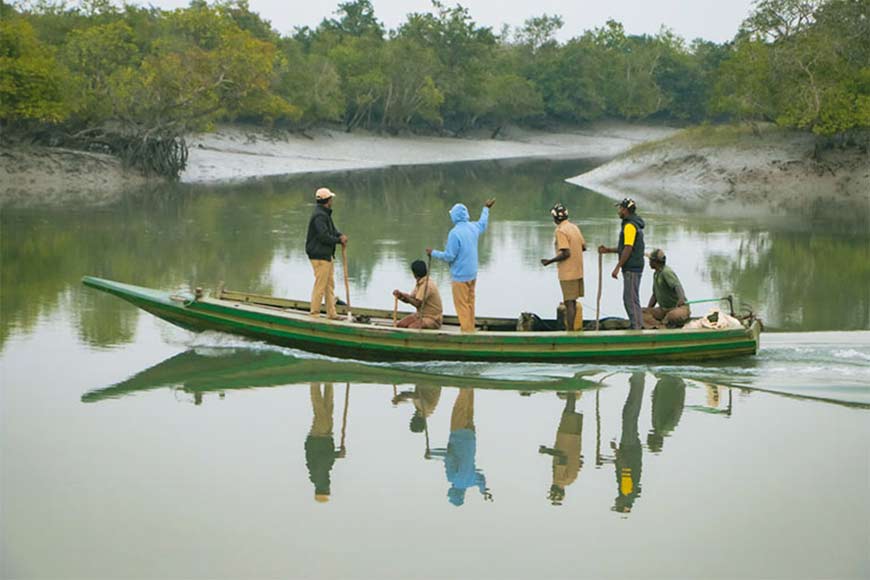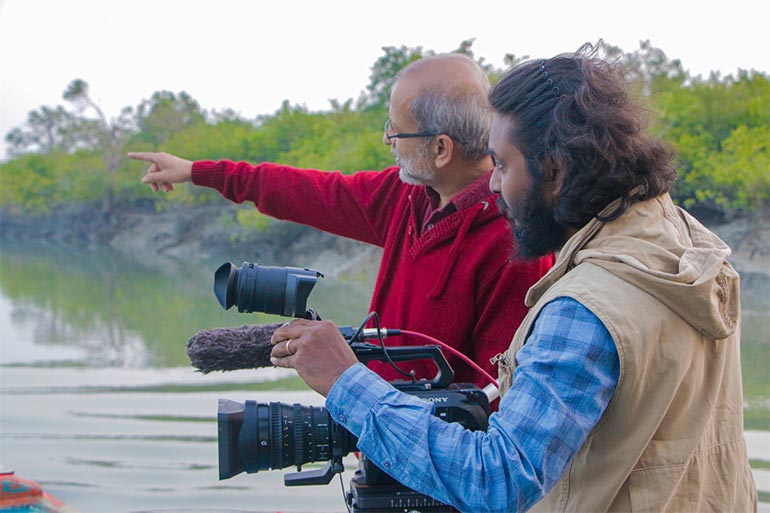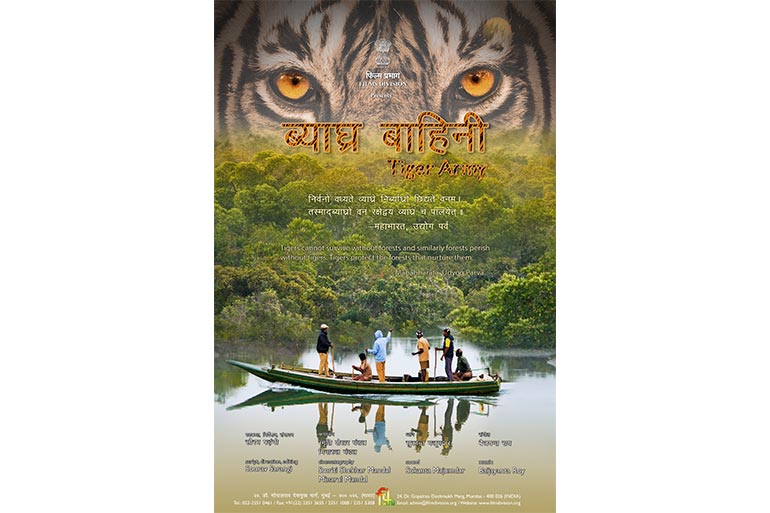Sourav Sarangi’s Bagh Bahini at KIFF 2023 talks about unknown Tiger Saviours - GetBengal story

The Sundarbans is the pride of Bengal. Any person who knows about Bengal is certainly aware of this region which is a cluster of low-lying islands in the Bay of Bengal, spread across India and Bangladesh and is famous for its unique mangrove forests. This active delta region is among the largest in the world, measuring about 40,000 sq km. The Sundarbans ecosystem is a unique natural wonder of South Asia and the globe. The delta is spread over India and Bangladesh with an area of approximately 10,000 square kilometres and is enjoying the status of being the largest halophytic mangrove forest in the world. It is a delta of the two great Indian rivers, the Ganga and the Brahmaputra, which converge on the Bengal basin. The whole area is the kingdom of the famous Royal Bengal Tigers. The Sundarbans is named after the Sundari trees which are found here in large numbers. The area is listed as a UNESCO World Heritage Site.
 Director Sourav Sarangi
Director Sourav Sarangi
But what stands out is the fight between humans and tigers, the stories of their coexistence. The Sundarbans is the symbol of incredible natural beauty and mangrove habitat of Bengal. In the eternal fight between the humans and the wild, sometimes humans become victorious and in other instances the tigers win. This fight that rages on, is the focus of Director Sourav Sarangi’s documentary film. Produced by the Films Division and NFDC, the documentary titled “Bagh Bahini” (or Tiger Army) is going to have its world premiere at the 29th International Film Festival (29th KIFF) in the Indian Documentary Film Competition Section (KIFF Competition on Indian Documentary Films).
Also read : Kalpanirjhar and its crusade for short films
Sourav Sarangi has been visiting the Sundarbans for 7 to 8 years now. There he met the local people and had conversations with the forest workers as well. Many voluntary organizations and government departments have been working in the Sundarbans for many years. Although the names of some organizations and some first rank individuals come up, the names of most individuals who risk their lives every day in the mud and water often get sidelined. Sarangi’s documentary film comprises these people who risk their lives in such dangerous conditions every day and those who have lost their lives doing so. After knowing the people of Sundarbans and hearing about their struggles, he decided to make a documentary on them. Central organizations such as the Films Division (which is now a part of the NFDC) have come forward to help him with the work. Along with the Department of Information and Broadcasting of India, the West Bengal Forest Department has specially assisted in the production of this documentary.
 Behind the scenes: Bagh Bahini shooting scenario
Behind the scenes: Bagh Bahini shooting scenario
It is said that India is home to more than 70 percent of the world’s tiger population. But at one point the number of tigers had started decreasing. In 1973, the then Prime Minister, Indira Gandhi launched “Project Tiger”. The aim of the project was to create awareness among the people on tigers and to ensure that tigers can survive naturally and peacefully in India. Before Project Tiger, the wild beasts were hunted and poached and their habitats were destroyed across India. “Project Tiger” created a protocol for the conservation of tiger forests across India. For the past few years, it has been working like that. At one point, killing of tigers became an almost regular occurrence in the Sundarbans. A tiger which somehow entered the village was unable to return to the forest. The bigger problem was the human consumption of tiger’s food. The animals such as deer and boars which are prey to the beast were often hunted by the villagers themselves. This is a major reason why the fight between the tiger and the humans continued for years. In the past few years, the people have become aware of the situation and there has also been an increase in the number of tigers. According to sources, the number of tigers in the country was 3167 in 2022. In the last four years, this number has increased by 200.
Currently, people are not cutting down trees in the Sundarbans due to the fear of tigers. If there remains no more tiger, there will not be forests too. The storms which get blocked by the forests of Sundarbans and could not affect Kolkata much, will destroy everything if there remains no forest barrier. Sourav Sarangi’s documentary tells the tale of a few unknown people who never gave up on this struggle.
Sarangi says: “Wildlife conservation is not possible without humans. The whole world seems to have always enjoyed the stories of blood-stained tigers where the tigers play the role of villains. Killing tigers was once a heroic act. But our ancestors were aware of the fact that tigers are the protectors of the forests. Humans for years have tried to eradicate the tiger population with the help of different weapons. It is the reason why we are losing forests. But Sundarbans have achieved success and the contribution of forest loving people is immense. And I have witnessed the tireless efforts of the forest workers.”

Sourav Sarangi graduated from Film and Television Institute of India, Pune. He has been working in the field of television since 1988, as an editor, as a director of tele-films and as head of the popular Bengali channel Aakash Bangla. He made his theatrical debut in 1996 with the documentary “Tusu”. “Tusu” is a festival in the tribal-dominated areas of West Bengal and Jharkhand. In 2008, he produced “Bilal” which was screened at more than 40 film festivals worldwide. His documentary film “Char” was produced in 2012 and won the National Award for Best Documentary. He has worked on “Bagh Bahini” for several months during and after Covid. The docu-film is finally going to be screened at the 29th Kolkata International Film Festival which will be held from 5th December, 2023 to 12th December, 2023.










